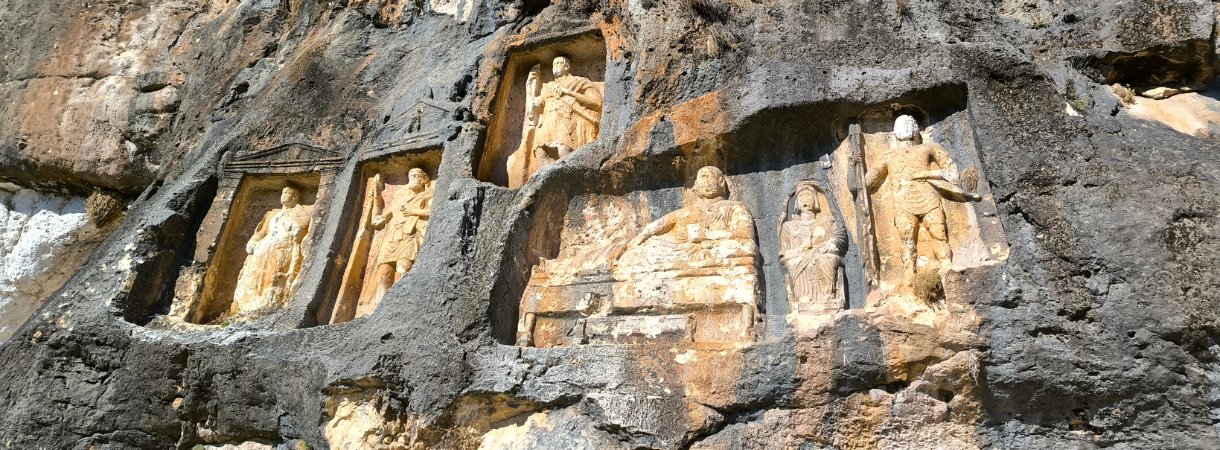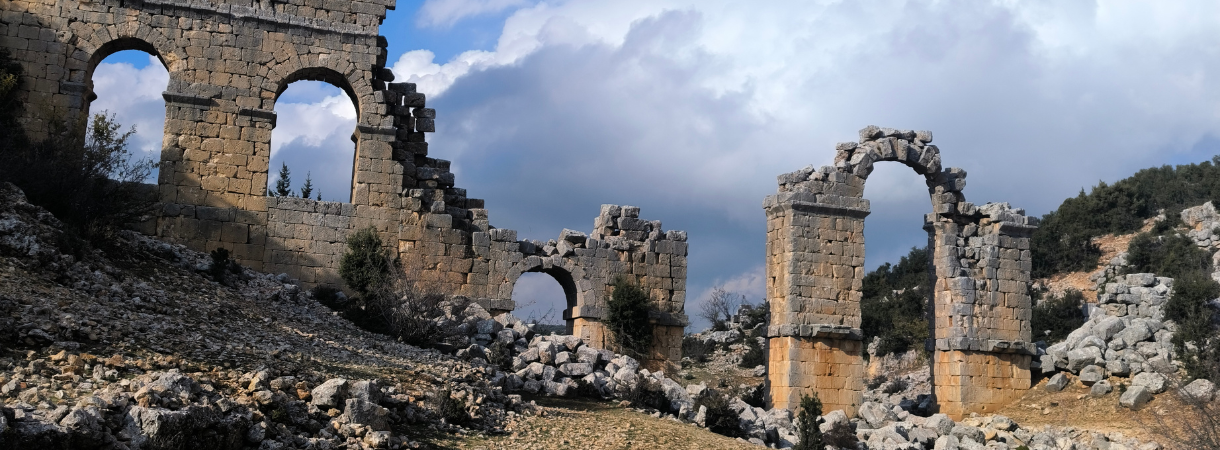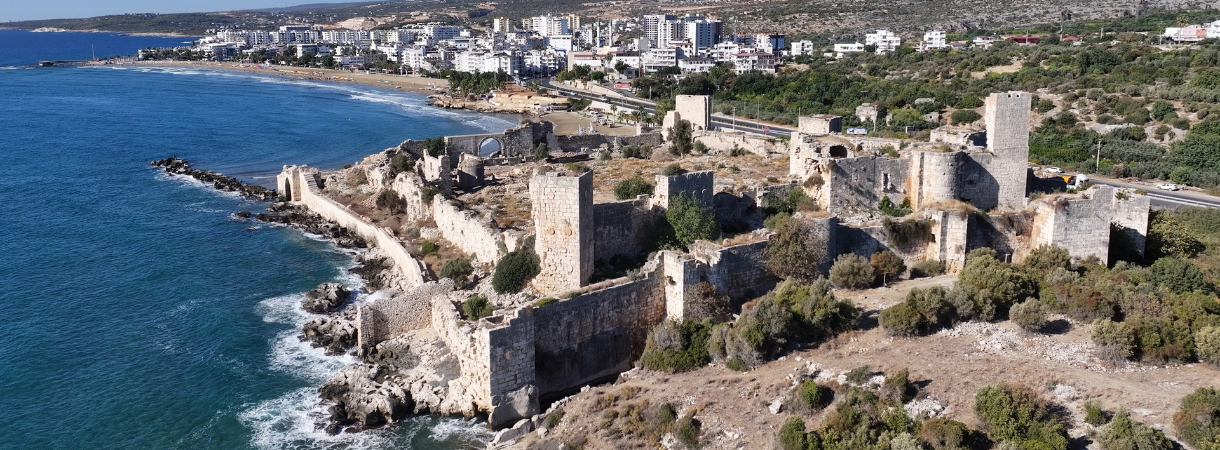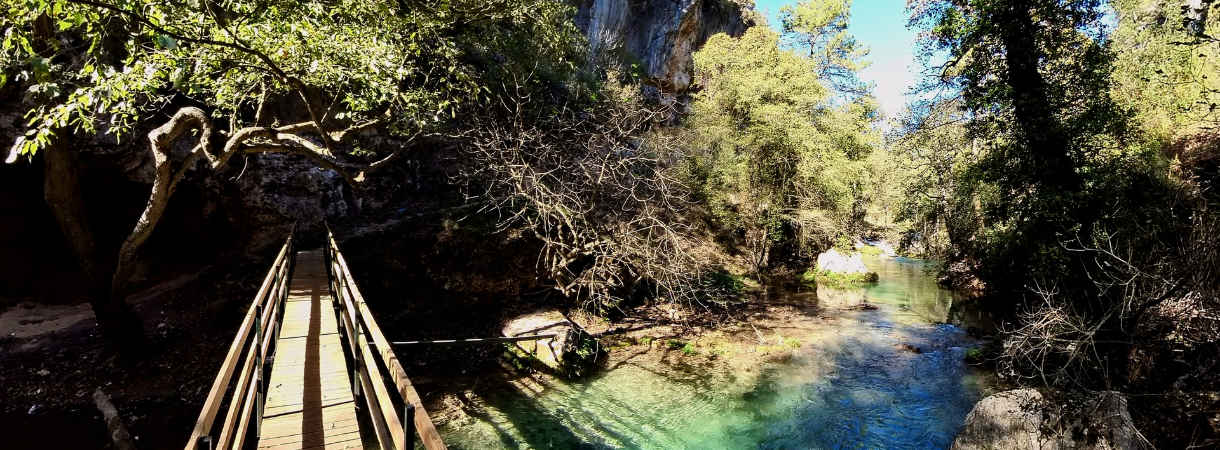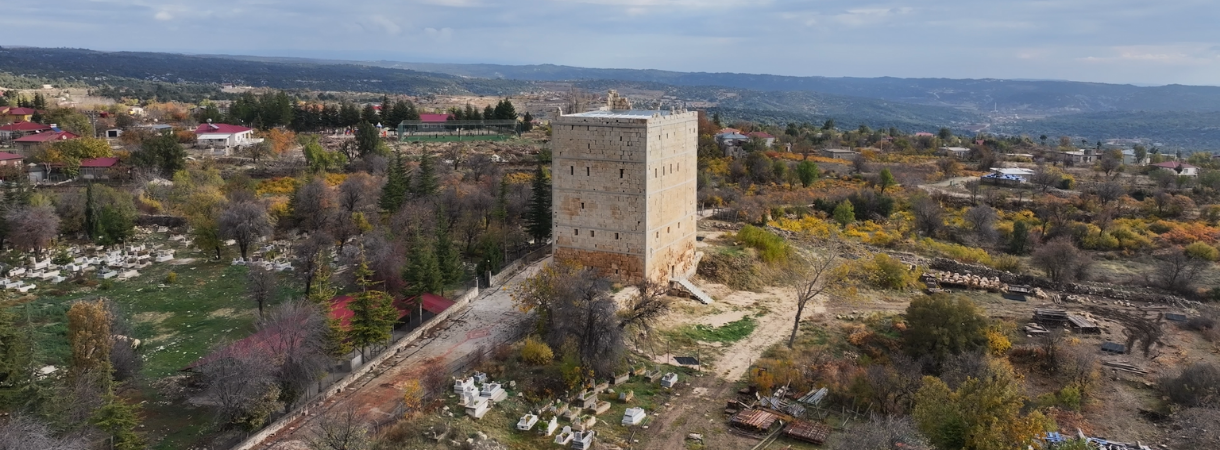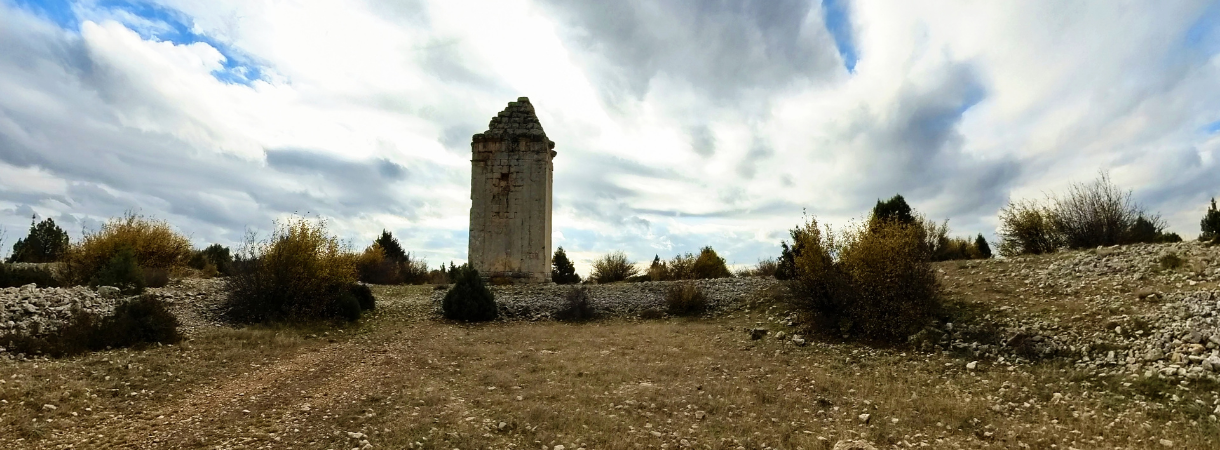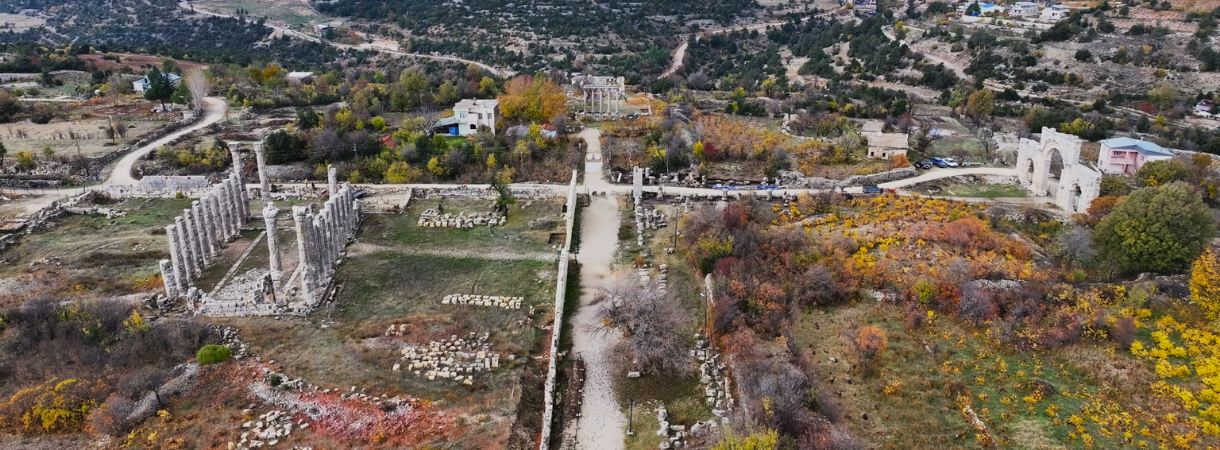About the Route
The Cilicia Road invites you on unforgettable journeys through mesmerizing natural scenery, ancient water systems, and timeless ruins. Beginning in the northern stretches of the Lamos (Limonlu) Valley and extending upstream toward the river’s source, these walking trails pass alongside Roman aqueducts and impressive feats of ancient engineering. Deep canyon paths offer a tranquil, immersive nature experience, while the routes from Kızılgeçit to Sömek unveil Roman water channels and striking soldier reliefs carved into the rock.
Upon reaching the southern part of Limonlu Valley, visitors encounter an ancient Roman bridge, a church, and the remains of an old water mill. The road continuing from Somek towards İmirzeli and Catıoren offers the opportunity to explore remains from the Hellenistic, Roman, and Byzantine periods. The Kerykeion symbol at the entrance to the Temple of Hermes highlights the origins of the healthcare sector. In Cambazlı Village, Roman monumental tombs and Byzantine churches form an impressive landscape. The road from here to the ancient city of Olba displays the splendor of the ancient capital with its aqueducts and theater ruins.
The sacred road between Olba and Uzuncaburç (Diocaesarea) offers the opportunity to visit the Roman-era pilgrimage center by reaching the Temple of Zeus. The walk toward Keşlitürkmenli unfolds like a journey through time, featuring Byzantine-era farmsteads, Hellenistic-Roman outposts, and the striking relief of Jupiter Dolichenus. Winding through forest paths, the route leads to archaeological treasures such as Yenibahçe and Kümbetkale, where the enduring legacy of ancient cities can still be felt.
The route to Atakent offers the opportunity to discover the impressive nature of the canyons, while the Cennet Cehennem (Heaven-Hell Sinkhole), Akkum, and Kızkalesi route is one of the richest walking trails in terms of cultural heritage. The path from Korykos to Adamkayalar offers a chance to witness some of Anatolia’s most impressive rock reliefs, as the route extending from Kızkalesi (Maiden's Castle) toward Elaiussa Sebaste and Kanlıdivane (Kanytella) blends history and nature through ancient necropolises, seaside churches, and sacred archaeological sites.
Upon reaching Demircili (Imbriogon), you will encounter impressive temple tombs. From here, the walk to Silifke continues with Roman and Hellenistic period ruins. When you head south from Silifke, the Dalyan (Paradeniz—semi-sea) region offers an unforgettable experience with its bird sanctuary and stunning natural beauty.
Route Features







Route Details
Route Stages
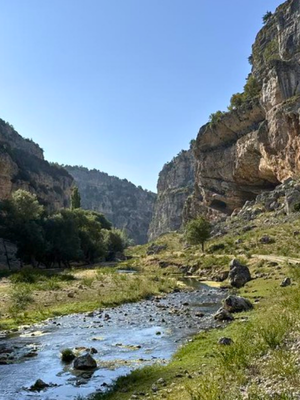
It is the first of the interlinked trails known as the Olba Trails. It is the northernmost trail in the Lamos (Limonlu) Valley. As in ancient times, the Lamos (Limonlu) River continues to supply water to a wide region. Following this magnificent trail, you’ll head north from the Gökler Creek to the river’s source. offers a perfect blend of adventure, nature, and history waiting to be discovered.
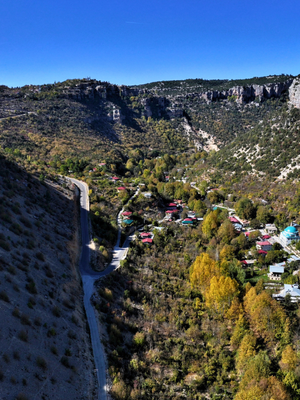
Set in one of Türkiye’s most stunning canyons—Lamos—this enchanting trail winds south along the serene banks of the Lamos (Limonlu) River. As you follow the river’s course, you’ll be immersed in the canyon’s breathtaking scenery and soothed by the sound of flowing water. This route offers a peaceful escape into nature and stands out as one of the most picturesque sections of the Cilicia Road.
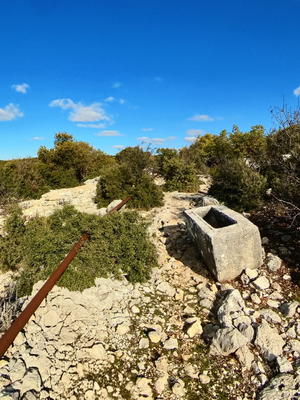
As the second of three stunning routes in the Lamos (Limonlu) Valley, this scenic trail follows the river southward from Kızılgeçit, offering a harmonious blend of nature and history. Along the western slope of the valley, hikers can marvel at ancient Roman water channels carved into the rock—an extraordinary feat of engineering designed to carry water from Kızılgeçit and its northern springs to coastal settlements using a gravity-fed system. Built with a precise gradient of just 2‰ over long distances, these channels showcase the ingenuity of Roman infrastructure.
As the trail leaves the valley and nears the village of Sömek, visitors are greeted with rare cultural treasures: about 1 km ahead, a Roman-era relief of a soldier stands along the route, followed by a unique early 3rd-century AD relief of the goddess Athena located 500 meters further on, just east of the main trail. This depiction of Athena is a one-of-a-kind artifact in all of Anatolia. Spanning an, this invites nature lovers and history enthusiasts alike to walk through landscapes shaped by both time and legend.
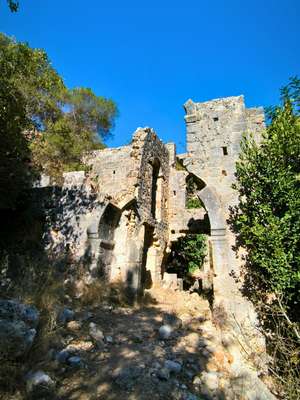
As the third and final leg of the Lamos (Limonlu) Valley routes, this stage begins in the village of Sömek and leads into the southernmost part of the valley. It’s the longest and one of the most immersive stages of the Cilicia Road, offering a rich combination of ancient heritage and natural beauty, perfect for extended hikes and camping adventures. Just 500 meters east of the main road from Sömek, you’ll encounter a remarkable relic: a relief of the goddess Athena, a unique artifact in all of Anatolia dating back to the Roman era. Returning to the main route and continuing another 500 meters, you’ll find a Roman-era soldier relief—another glimpse into the region’s storied past. As the trail descends into the Lamos Valley, it reveals a series of Roman engineering marvels on the western slopes: ancient water channels meticulously carved into the rock, transporting water from inland sources to coastal settlements. Along the way, you'll also pass the remains of a Roman bridge, a church, and a historic watermill.
Stretching across , this is the longest stage of the Cilicia Road and an excellent choice for those looking to camp and fully immerse themselves in the history and tranquility of the valley.
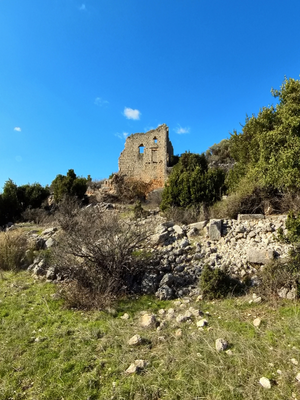
Beginning in the village of Sömek, this captivating trail follows the course of an ancient Roman road—one of many in the Olba region that connects a network of long-forgotten settlements. Hikers will encounter remarkable traces of antiquity, offering a journey through layers of Hellenistic, Roman, and Byzantine history.
The route features two outstanding archaeological treasures: İmirzeli and Çatıören. These ancient settlements, still largely unexcavated, showcase impressive architectural remains and invite discovery. One of the highlights of the trail is the chance to photograph the Temple of Hermes in Çatıören—an exceptionally well-preserved 2nd-century BC structure. Above its monumental entrance, visitors can admire two reliefs of the Caduceus (Kerykeion), Hermes’ staff with intertwined serpents—an enduring symbol now widely recognized in the health and medical fields. This is a must-see for cultural explorers and archaeology enthusiasts.
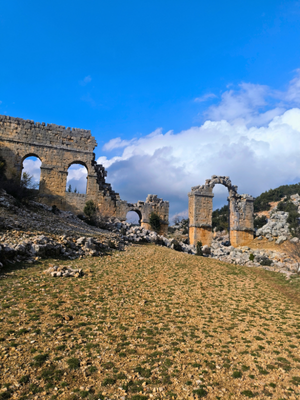
Once a vital crossroads in antiquity, Sömek Village connects to Cambazlı via an ancient stone-paved road rich in history and natural beauty.
This scenic route leads to Cambazlı, a treasure trove of archaeological heritage featuring a splendid 2nd-century AD tomb and a beautifully preserved 5th-century church, both among the most remarkable monuments in Anatolia.
After exploring Cambazlı, where photo opportunities abound, the path continues toward Olba, the sacred capital of the Olba Priest Kingdom, through the lush Karyağdı Valley.
This section follows a remarkably preserved Roman road, culminating in the impressive ruins of Olba, highlighted by its majestic aqueduct.
Spanning this offers a perfect blend of history, nature, and architectural splendor.
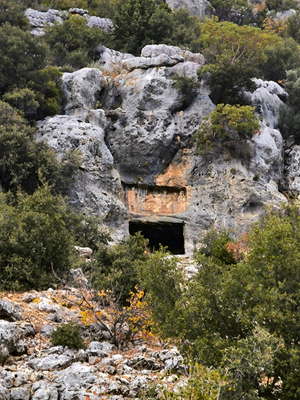
Olba is the ancient capital of the Olba Region from the Hellenistic period. However, all of the monumental structures encountered in Olba today, such as the aqueduct, theater, city walls, tombs, and nymphaeum, date back to the Roman period.
After capturing the impressive archaeological beauty of the capital, you will reach Sumakalanı and Keşlitürkmenli via a wonderful Roman road paved with stones. It is a of
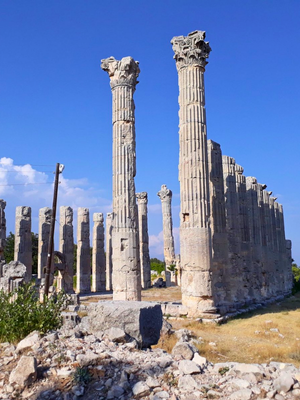
Stretching for approximately 4 kilometers, the ancient sacred road connects the former capital, Olba, to the sacred site of Uzuncaburç, which was once a major pilgrimage destination.
Beginning at Olba’s western gate, this stone-paved road leads to the grand Temple of Zeus, marking the heart of a spiritual and ceremonial center in antiquity.
During the Roman period, this sacred area was separated from Olba and reestablished as Diocaesarea, the new capital of the Olba Region.
Along this unforgettable path, visitors can walk on original Roman paving stones, explore both historic capitals, and admire stunning archaeological landmarks.
Continuing toward Sumakalanı and Keşlitürkmenli, is of and a true delight for history and archaeology enthusiasts.
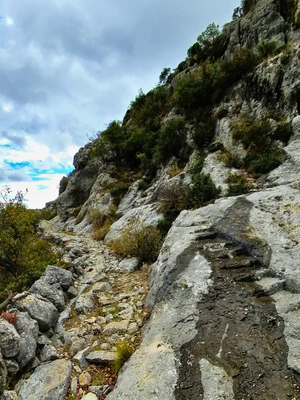
This scenic path begins with a peaceful forest walk and leads to Gökkale, a remarkably preserved Byzantine farmhouse.
The path then continues to İmamlı, once home to a significant outpost of the Olba Priest Dynasty during the Hellenistic period.
From there, it descends toward Yenibahçe Stream, partially following ancient Roman roads through landscapes rich in history.
Along the way, hikers encounter a wealth of archaeological treasures, including the impressive Gökkale, a Byzantine villa rustica (large farmhouse) from the 5th century AD.
Notable highlights also include the hilltop ruins of Meydankale, a Hellenistic-Roman fortress, and a striking relief of Jupiter Dolichenus standing on the back of a bull.
This captivating offers a and a deep dive into the region’s layered past.
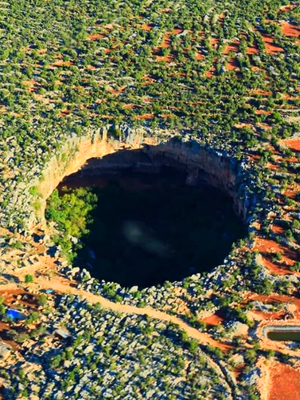
Yenibahçe, a major crossroads of the Cilicia Road, serves as a vital artery in the Olba Region’s ancient trail network.
From this key junction, several paths branch out, including the southeast route leading to remarkable archaeological sites.
Highlights along this stretch include the Roman or Hellenistic-Roman fortress of Kümbetkale, the mysterious Aşağı Dünya Obruğu (Lower World Sinkhole), Karakabaklı, and the castles of Sinekkale and Işıkkale.
The is generally when walked from north to south, making it accessible for most hikers.
When taken in reverse, the same path offers a more challenge due to elevation gain.
The trail concludes at Kabasakallı Village, just 4 km east of Silifke, providing an ideal end point near modern amenities.
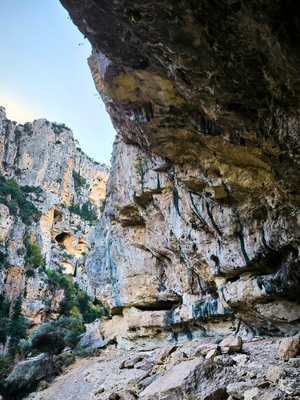
This offers a route through one of the most stunning canyons along the Cilicia Road.
Kubat Canyon is not only visually breathtaking but also historically significant as part of the ancient connection between the inland capital of Olba and the Mediterranean coast.
Following a path carved through time, this valley stands as a remarkable example of how natural landscapes once served as vital transportation corridors. The journey concludes in the seaside town of Atakent.
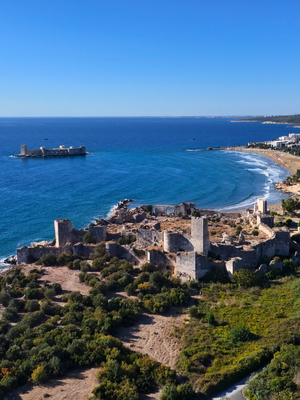
This route, which follows the Cilicia Road, is one of the most culturally rich paths, if not the most. All the towns listed above have archaeological sites, each offering stunning views and historical stories. Kızkalesi (Maiden's Castle) can be reached via a beautiful road. . When you go south from Cennet Cehennem (Heaven - Hell Sinkhole), you'll arrive at Narlıkuyu in about 2 km. Don't miss seeing the three beauties (aka three graces) on the floor mosaic of the ancient bathhouse here.
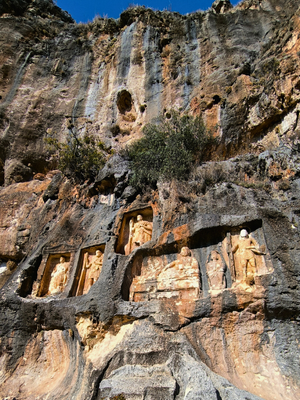
Begin your journey from the heart of Kızkalesi, following an easy 3.5 km route that winds north along the eastern slope of the valley. This scenic path leads to Adamkayalar, one of Anatolia’s most striking cultural landmarks.
Korykos (Maiden's Castle)
Known in antiquity as Korykos, Kızkalesi is a symbol of Mersin, located about 60 km west of the city center.
The town’s name, “Maiden’s Castle,” comes from the offshore island fortress built in the Middle Ages and surrounded by legend.
According to local folklore, a prophecy warned a king that his daughter would be killed by a snake, prompting him to build the castle on the island to protect her.
Despite his efforts, a snake hidden in a basket of grapes found its way to the island, fulfilling the prophecy and giving the Korykos Castle its hauntingly beautiful and modern name.
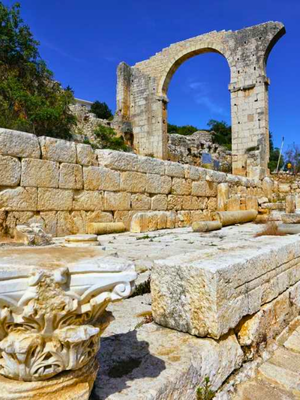
This path, which connects the major archaeological sites on the coast, is one of the most important cultural routes of the Cilicia Road. Starting from the hidden necropolis of Korykos (Kızkalesi), the path passes through one of the most crowded cemetery areas in Anatolia and then reveals churches in magnificent condition. Accompanied by sea views, the path continues towards another important ancient city, Elaiussa Sebaste (Ayaş). After exploring the awe-inspiring ruins of Elaiussa Sebaste, once a thriving capital of the region, the trail leads through a significant ancient necropolis. From there, the path continues toward Çanakçı and Kanlıdivane, both of which were prominent sacred sites in antiquity.
Spanning , this challenging route offers a rich blend of cultural heritage and natural beauty.
With each step, visitors follow in the footsteps of ancient pilgrims and rulers across a landscape steeped in history and spiritual legacy.
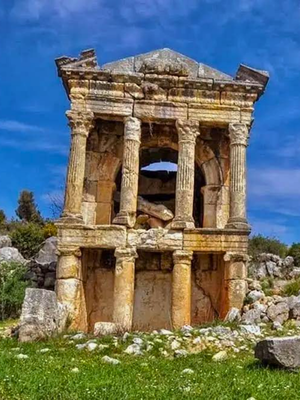
Heading southwest from one of the key crossroads of the this leads to the , considered among the most striking architectural remnants in the region.Blending gentle terrain with historical splendor, the path offers an unforgettable journey through the heart of ancient Imbriogon, where stone speaks of legacy and landscape.
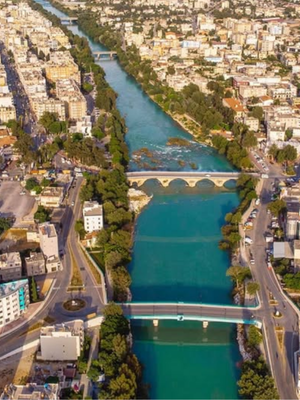
Following your visit to the breathtaking temple tombs of Demircili (Imbriogon), an easy walk leads you directly to the heart of Silifke. Although there are ruins from various periods in Demircili, the most striking monuments are the temple tombs.
In this area, five monumental tombs are located at relatively close distances from one another, two on the left side of the main road and three on the right side. Additionally, the pyramid-roofed tomb located slightly further east at the site known as Castle of Horozkale or Öterkale can be considered part of the same complex.
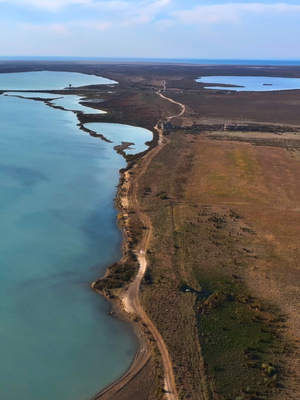
A walk south from Silifke takes you to Dalyan, also known as Paradeniz. A natural wonder, Paradeniz is a bird paradise that is home to approximately 400 species. It is possible to encounter large colonies of birds, especially during the migration season, or, if you are lucky, to see endemic species. "As one of the region’s main highlights, this path captivates with breathtaking views of Paradeniz and the vibrant colors of the protected delta, offering an unforgettable visual experience."
PS: Paradeniz (literally "semi sea") is a lagoon along the Mediterranean Sea shore in Mersin. It is part of a lagoon system composed of four lakes.
